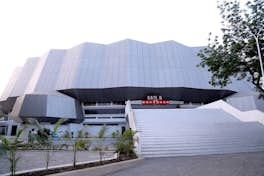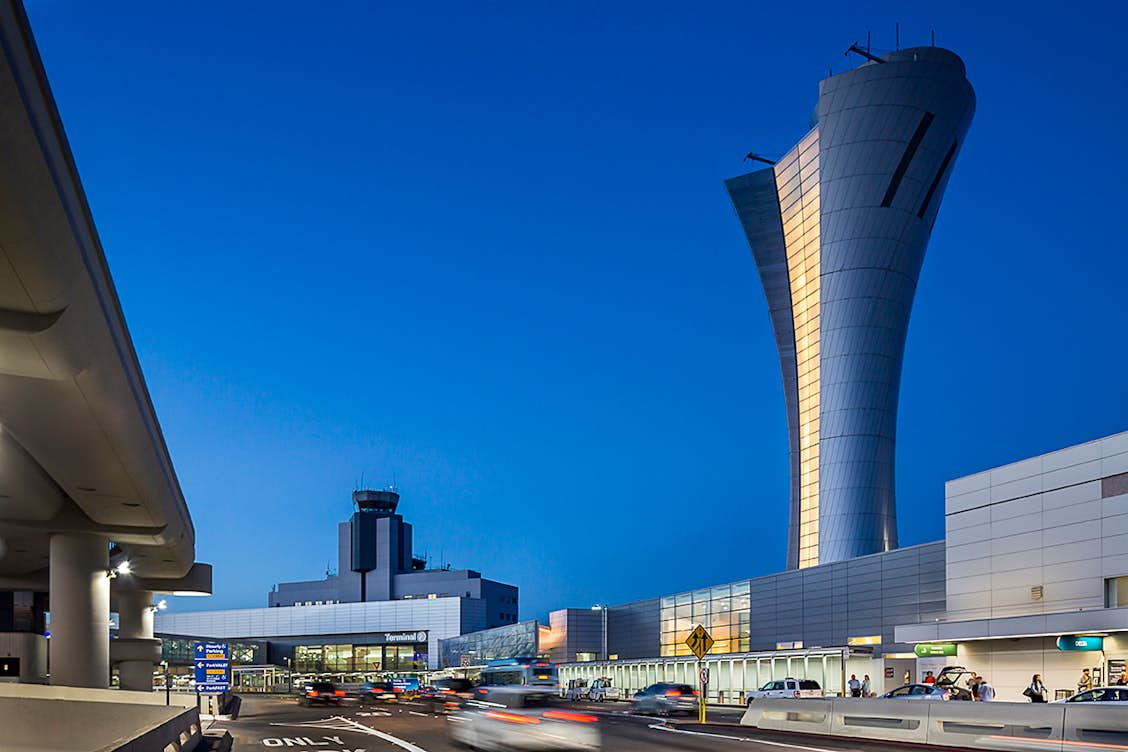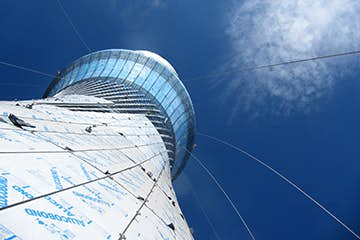The resulting 221-foot-tall 5,652-square-foot shimmering-metal tower features a geometrically complex design resembling a sweeping torch that is topped with an offset control cab – the latter providing Federal Aviation Administration (FAA) air traffic controllers with an unobstructed 270-degree view of airport runways and taxiways.
The new tower – which is designed to withstand a magnitude 8.0 earthquake and remain operational – replaced the previous airport control tower built in 1981 that does not meet stricter seismic standards. The new air traffic control tower is the tallest vertical self-centering post tension concrete structure in the United States and is designed to achieve LEED Gold certification from the U.S. Green Building Council.
A total of 10,000 square feet of formable 4mm Alucobond® Plus aluminum composite material (ACM) in the custom SFO Silver color clads this spiraling torch-shaped structure. (Recyclable Alucobond – which is manufactured with both post-manufacturing and post-consumer content – contributes LEED credits to building projects.)
The west face of the airport control tower is “opened” vertically with a backlit glass façade that stretches 147 feet in the air to create a local visual landmark. Situated above a new three-story FAA office building and walkways connecting Terminals 1 and 2, the open-core design allows passengers to gaze directly up into the tower through corridor skylights to view the cascading waterfall lighting.
“The tower lighting can be changed based on the mood of the airport,” according to Mark Costanzo, P.E., project manager, SFO, who said the façade’s changing LED colored lighting transforms the tower in recognition of holidays and special events.
This iconic tower concept design was the collaborative work of SFO and Los Angeles-headquartered HNTB Corp., which served as master architect for the project. Detailed design work was completed by Denver-based Fentress Architects, which served as architect of record and worked in a design-build capacity with general contractor Hensel Phelps Construction Co., of San Jose, Calif. Walter P Moore, of San Francisco, served as structural engineer for the tower.










